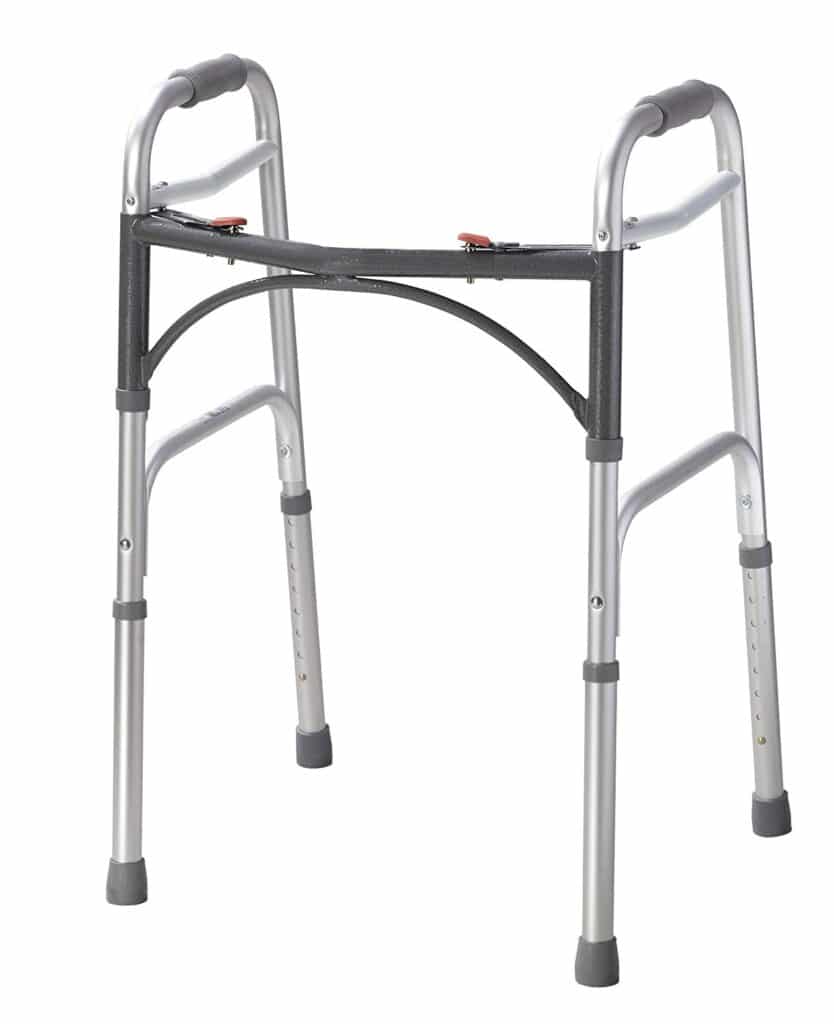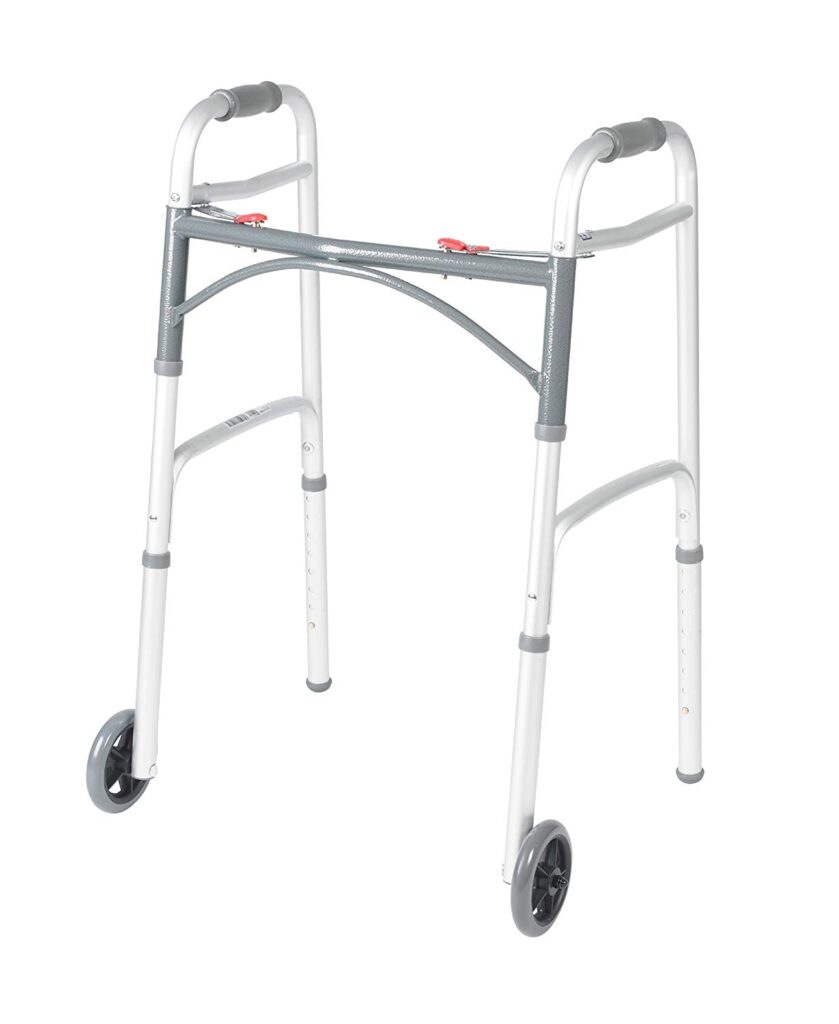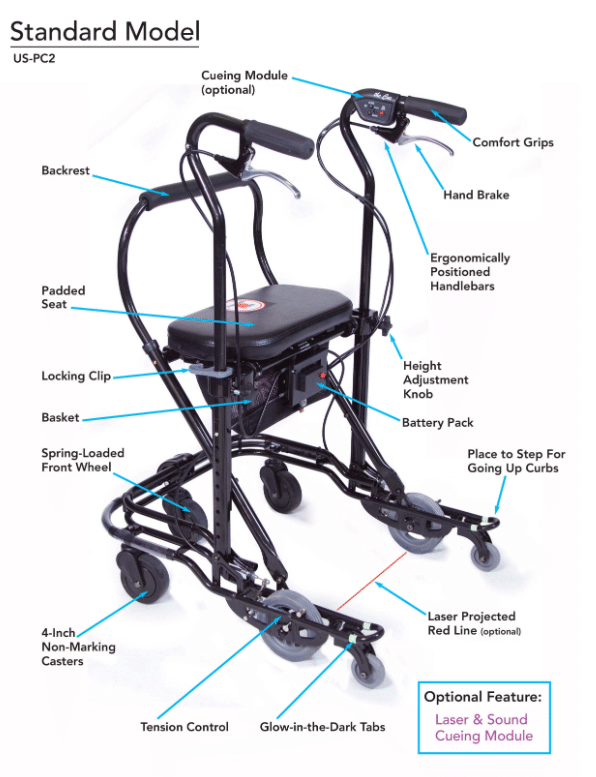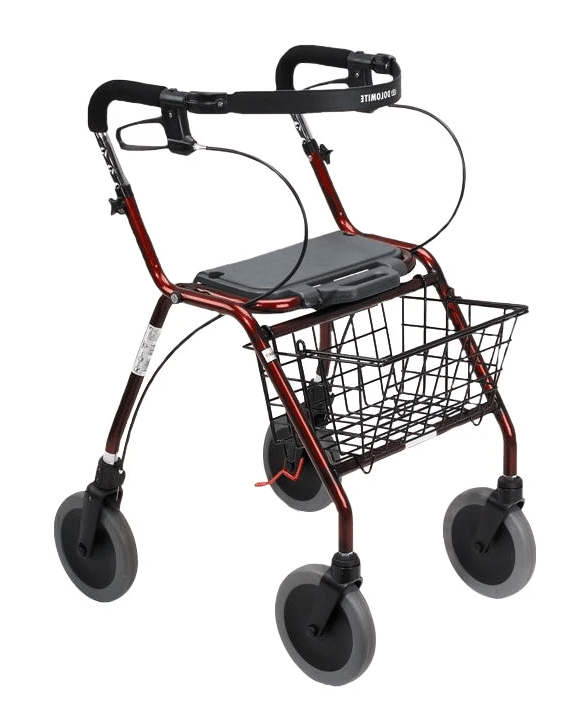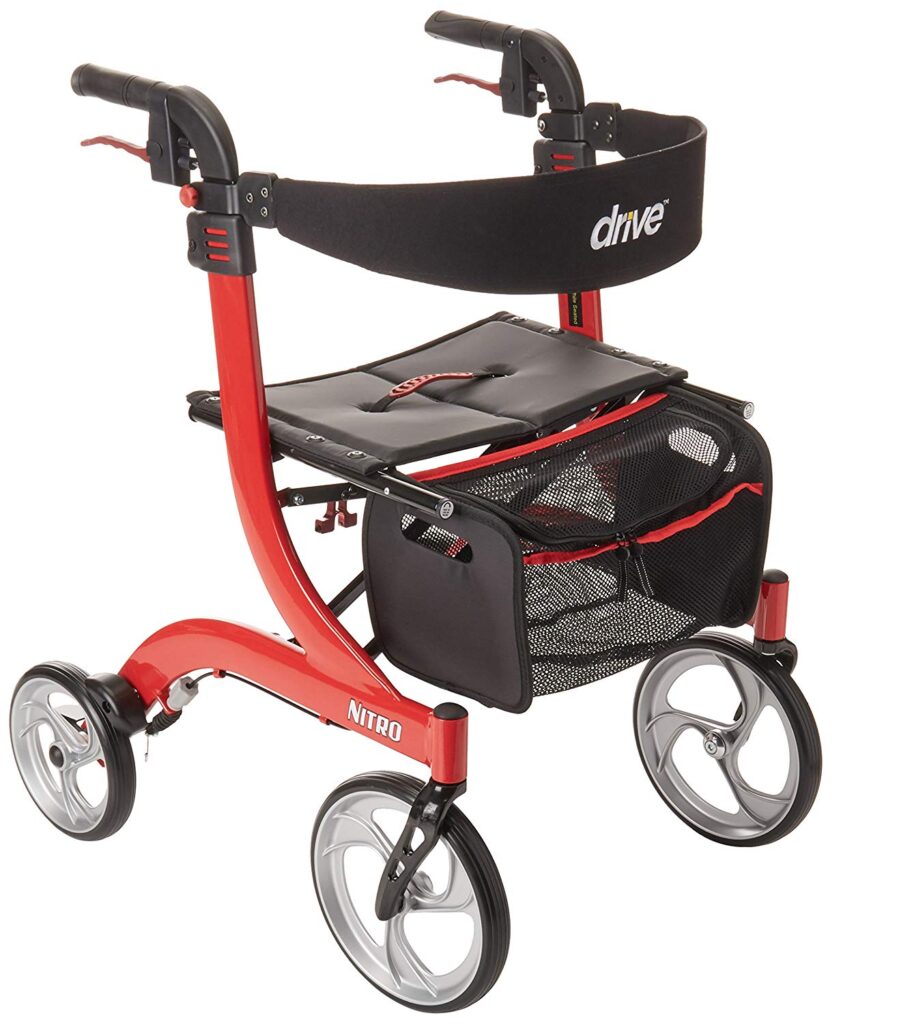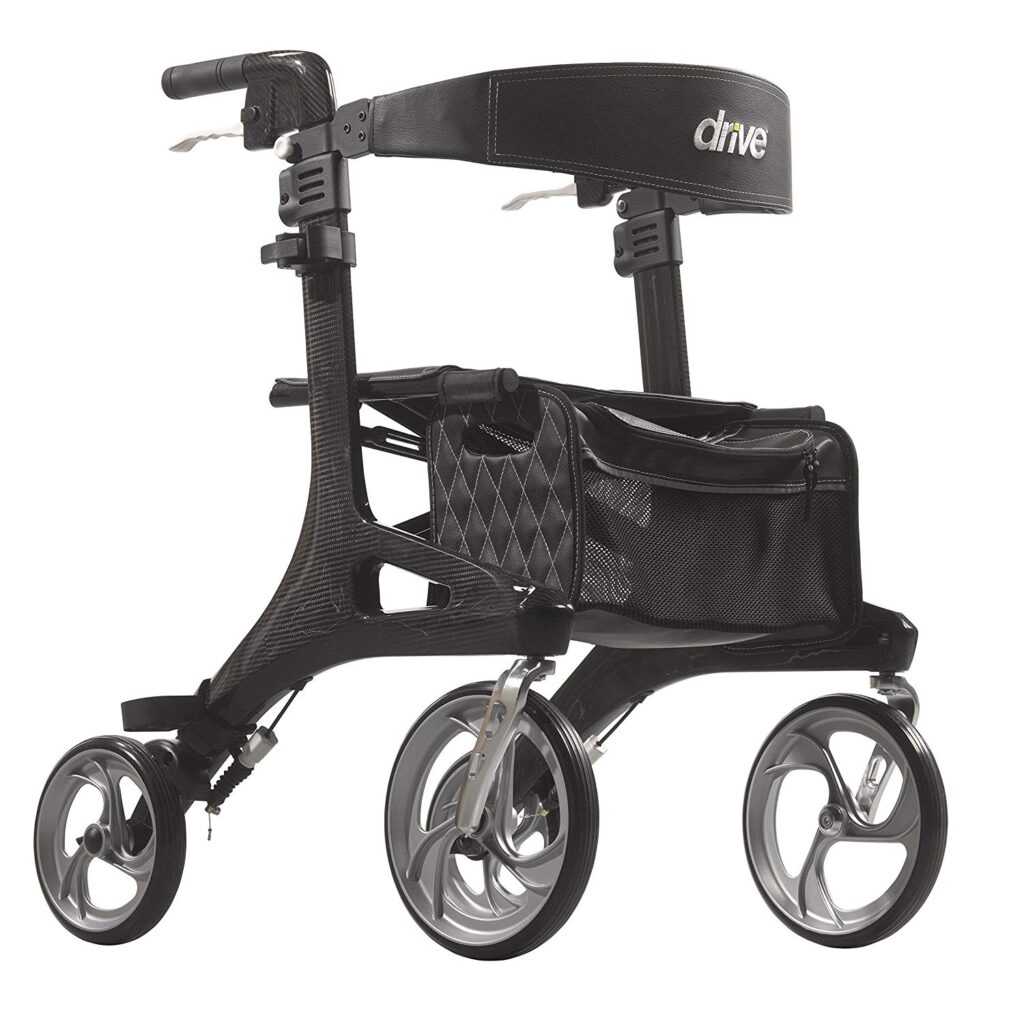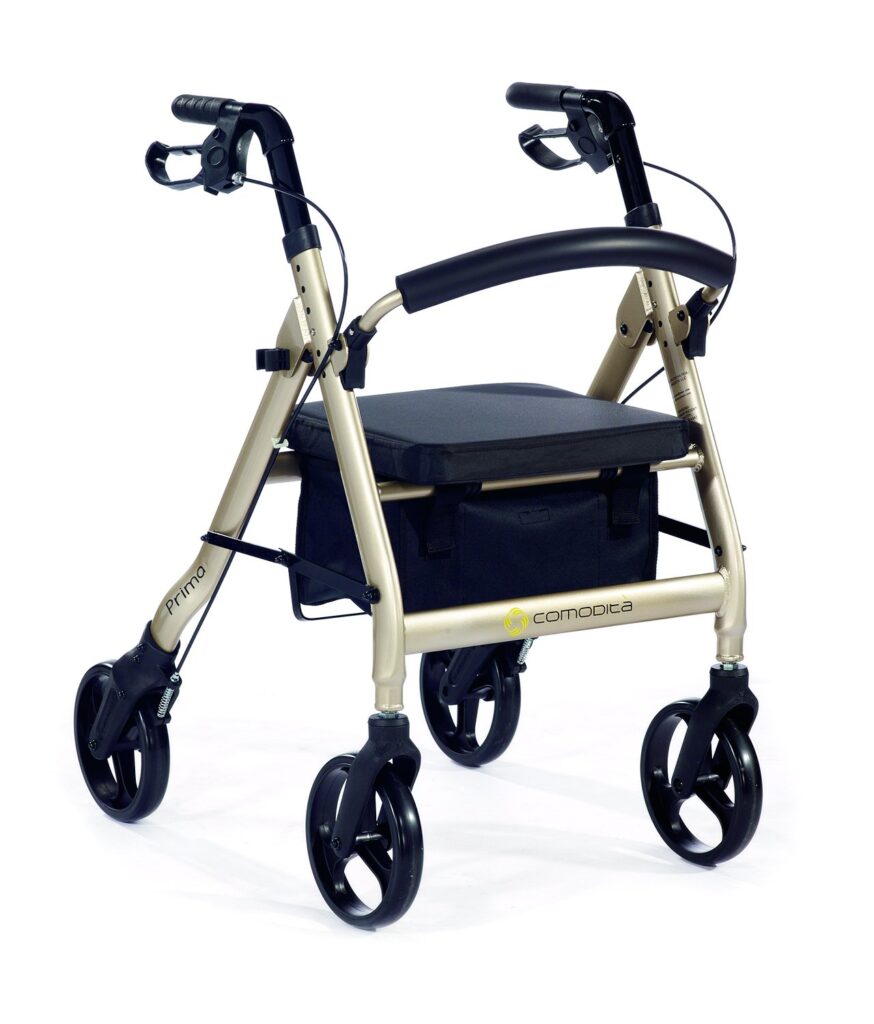When people begin to experience a decline in balance or mobility, a common suggestion is to purchase a walker. There are many options available, so we created the ultimate guide to choosing the best walker to help you decide what works best for your situation!
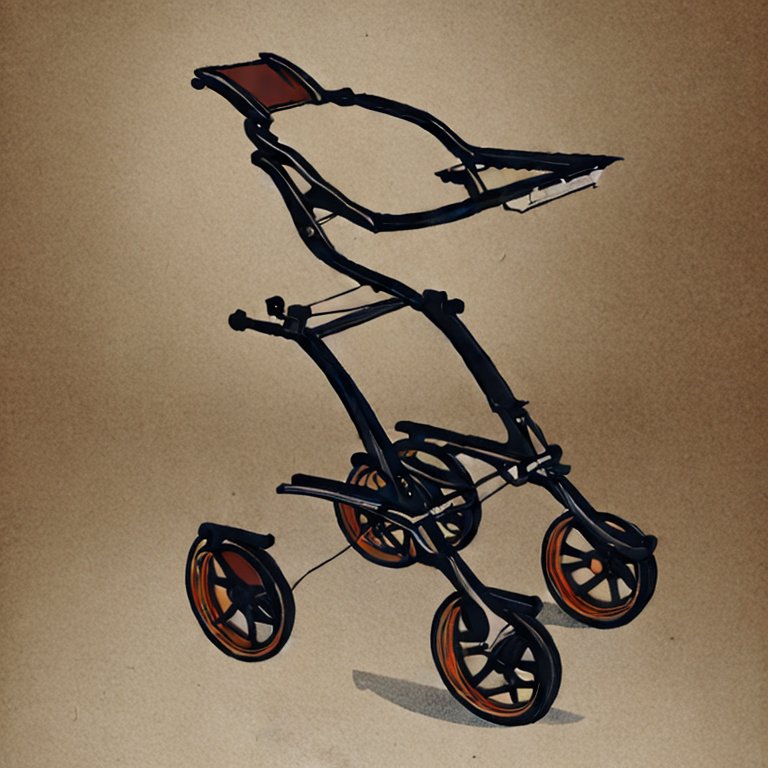
Find the Best Walker for You
A walker, or any assistive device, is designed to help you walk more safely and avoid a fall. They DO NOT inherently create a dependence on the device and using one does NOT mean that a person will always need it in every situation. Although many people may feel they are not ready for a walker, the most important consideration is whether a device would help reduce the risk of falling. If the answer is yes, get one… because avoiding further injury is the first step in getting stronger.
Walkers
A walker generally has a frame and four feet that help support a person while standing and walking. Walkers can either have four rubber-tipped feet, or two wheels in front and two feet in back.
Collapsible walker
The collapsable walker must be picked up entirely each step and placed down flat on all four feet, otherwise it can actually increase your risk of falling.
Pros
- Very stable when used correctly (Have a therapist come to your house to show you how to use it correctly.)
- Good for short infrequent distances
- Appropriate for users with very poor balance/injuries
Cons
- Very seldom used correctly
- Terrible for longer distances
- Very slow
2-wheeled walker
You can drag it across smooth floors, but it tends to work terribly outside on more rugged terrain.
Pros
- Can be wheeled, instead of picked up
- Can also have swivel wheels to facilitate turning
- Can be adequate on smooth indoor surfaces
- Good for short indoor distances for people progressing from a standard walker or very unsteady.
Cons
- Drags terribly on rough surfaces.
- Can cause wear marks in floors. Tennis balls on back feet often wear down quickly on textured surfaces.
- Does not handle bumps or uneven pavement well
- Slow speeds can be aggravating for more mobile users.

Learn about In-Home Physical Therapy covered by insurance.
Rollators
The next step up in speed and ease of motion is the rollator. These include 4 wheels, drag brakes, parking brakes, and a seat. The parking brake setting must be used when using or getting up or down from the attached seat.
Pros
- Rolls much easier over uneven terrain, including sidewalks, rugs, and thick carpet.
- Allows for faster walking speeds which can improve function
- Easier to turn which can improve safety for more mobile users.
Cons
- Requires user to be cognitively able to remember safety procedures to avoid serious, common accidents (such as not locking the walker when trying to sit down and having it slide out from underneath them.)
- Not appropriate for heavy weight-bearing (pushing) through arms of walker
Specialty Rollators
If you have a higher budget, or specific mobility issues, these walkers can be very nice and helpful.
Rollators for Parkinsonian Gait Issues
The U-Step walker offers many features aimed at helping people with Parkinson’s reduce common walking issues, such as shuffling and freezing.
Premium Rollators
Premium rollators offer improved durability and manufacturing as well as features, such as larger wheels, which can make walking over uneven surfaces easier.
Dolomite Rollators
I have always been a fan of Dolomite walkers because they allow the user to stand inside of the walker better than other brands, which improves balance and overall stability. They are also very well made and sturdy.
Other Premium Rollators
There are many other premium rollator brands that offer larger wheels, unique collapsing functionality, and higher quality components. If you use your walker daily for significant periods of time, spending more on a premium walker can help to ensure that it works better and lasts longer than other, less expensive models.
3 Wheeled Walkers
The next level up in ease of mobility would be the 3 wheeled walker. They feature drag brakes, parking brakes, and often a basket.
Pros
- Much tighter turning radius
- Smaller footprint
- Easier to collapse and put into a car
- Light weight
Cons
- Less stable. Appropriate for people who might reach for furniture for a little added balance as they walk, if they didn’t have a walker.
- Must be used correctly to avoid increased fall risk. (I’ll address this in another article)
If you are still unsure about what option is best after reading this ultimate guide to choosing the best walker, it might be helpful to work with a physical therapist to determine what is appropriate for you, or if there are other solutions available. Physical therapists can be very clever when it comes to finding solutions for unique situations!

